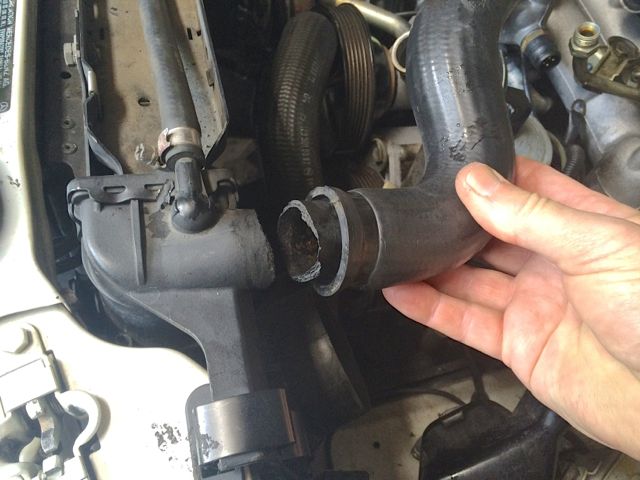If this picture does not scare you I don't know what will. This has happened way too often in the past and it is increasingly happening as these cars age. The picture below is from a 1990 300SL convertible with only 100,000 original miles. So you see it has more to do with age than mileage. Most of the Behr radiators with plastic tanks from the late 1970's to the mid 1990's can be subject to this problem. Many have speculated as to the cause. It is probably a combination of manufacturing materials used, condition of engine coolant, engine heat, engine vibration, type of hose clamp used and how much torque was put on the clamp. It seems to only be the top neck that fails so heat is certainly a factor.
Problem & Solution
Common among these chassis:
Most of the new replacement radiators come with a metal insert installed or are made with a fiber reinforced plastic material. That gives you an indication of what the solution is for an older radiator. For years mercedessource has been supplying a kit that will allow you to add a heavy metal insert to your existing radiator neck. We believe every old original Mercedes radiator should have this modification NOW!!

By the way, the break in Kent's 300SL radiator above was discovered in the shop when the hose was removed for inspection. When the clamp was loosened the top hose just fell off. ONLY THE EDGE OF THE HOSE CLAMP WAS HOLDING THE HOSE ONTO THE RADIATOR! Can you imagine what would have happened if this would have come off driving down the freeway at 70 mph. ( Good example of why you want to monitor your engine instruments ). Some have reported catastrophic over heating of the engine with the failure of the upper radiator neck.

